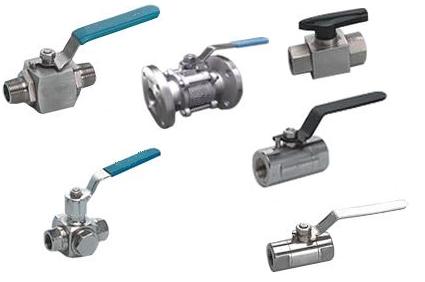A ball valve is a port valve that opens to let fluid in and closes to shut fluid off. It is named for the ball inside the valve that rotates. They are used in many areas due to their ease of repair and ability to withstand pressure and temperature. Depending on what they are made of, ball valves can hold up to 10,000 pounds per square inch. They range in size from a quarter-inch opening to a foot wide or larger.
The valve is made up of an outer shell, a ball with a hole in it and a handle. To look at the valve simply, the ball inside the shell plugs up the valve opening. A handle attached to the ball can turn the ball from outside the valve shell. The ball has a hole through the middle that will allow fluid to pass. When the handle is turned to the open position the hole in the ball is facing the same direction as the valve shell. To turn it off, the handle is moved and the ball turns with the hole facing the sides of the valve wall.
The ball valve comes in several variations. The full port valve has a hole in the ball that is the same dimensions as the pipe that it is attached to. This keeps fluid from being restricted as it flows. The reduced port valve creates an opening in the ball that is smaller than the pipe. This creates less fluid flow. A trunnion valve has a pin securing the ball so that it doesn’t dislodge. This is for high velocity flow. There are three- and four-way valves, as well. With these the flow is altered by the position of the ball. The hole in the ball of the valve is normally shaped like a T or L. When it is a T it can allow flow in two directions at once or one direction with the other side closed. When it is an L shape it allows flow in only one direction at a time.


